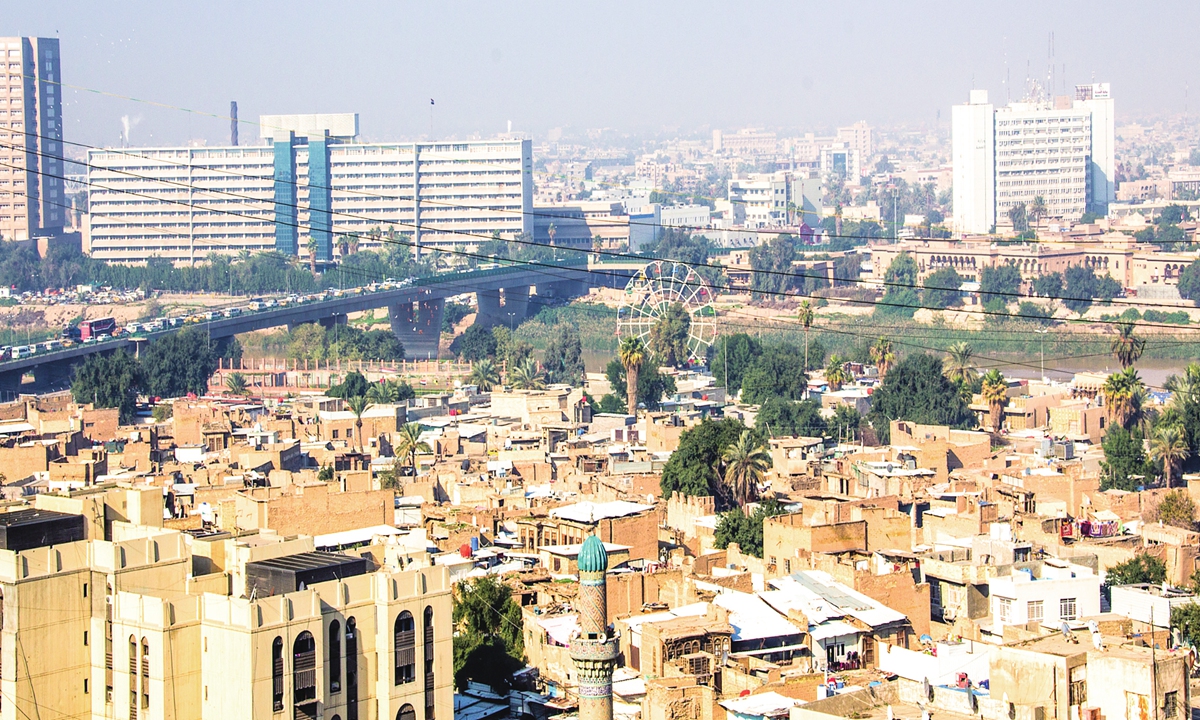
[ad_1]
An Iraqi street vendor displays gemstone rings in the capital Baghdad on March 18, 2021. Photo: AFP

Baghdad, Iraq Photo: VCG
Walking down a narrow alley near the heritage al-Rasheed street in central Iraqi capital of Baghdad, visitors are sure to be fascinated by all the many fine gems and adornments displayed by stall vendors and shops on both sides of the alley.
With sparkling colors and exquisite designs, gemstones have captured the hearts of Iraqis for centuries, becoming part of their traditional and cultural heritage.
Gemstones are seen by many Iraqis as more than beautiful ornamental stones or objects of art, believing that they will bring about luck, ward off evil, prevent danger and even possess healing powers.
“I have been working in selling gemstones since 2010, and there is a great demand for gems such as agate, sulemani hakik, Daoudi, Abbasabad, and many others,” said Sabah Kamel, a 51-year-old vendor at a stall full of colorful stones, prayer beads and gem inlaid rings.
Kamel told the Xinhua News Agency that the business is lucrative, because the buyers believe that the precious stones will bring them good health and fortune.
Most of the gemstones in the market are imported from Iran, Yemen, Saudi Arabia, Egypt, Turkey and many other countries. Others are extracted from local mines in Najaf of Anbar Province, some 160 kilometers south of Baghdad, and the mountainous areas in the semi-autonomous region of Kurdistan.
Gemstones sold on the market include red and blue sapphire, opal, emerald, turquoise, onyx, crystals and jade, along with Dur al-Najaf, a glossy and clear gemstone from the quartz family that was produced near the city of Najaf, which Kamel said is of great demand.
Throughout the Iraqi history, the enchanting luster and rareness of gemstones have inspired many people to endow them with supernatural powers, a belief that has gradually become a crucial part of local culture.
“People believe that Dur al-Najaf is a blessed stone because it is usually found only in the holy Shiite city of Najaf… It is believed that it increases happiness and helps cure eye diseases,” Kamel added.
Fadhel Abbas, 45, who traveled some 100 kilometers to the gems market in Al-Maidan of Baghdad, said he takes gemstone collecting as a hobby.
“I used to come to the gems market in Al-Maidan every two or three weeks, because I love them,” he said.
“I have a large selection of gemstones. Some are very expensive,” he added.
In his lapidary workshop, Isam Abu Haider said gemstones sometimes sell at a better price if vendors relate them to ancient tales, customs, religious beliefs, historical events or artwork, or if they look similar to animal shapes.
“Once, I got a stone that the composition of its layers looks like a fish. It was very beautiful. I sold it for more than twice its price. People are willing to pay,” Abu Haider added.
Mohammed Rashid, 45, was busy attending to customers inside his large shop in the alley. When he finally squeezed some time, he put out dozens of prayer beads in different colors, some of which were priced between $2,000-$3,000.
“For me, gemstones are the best trading option due to the unstable political and social situations in Iraq, let alone the fluctuation of the dollar value and other precious metals,” Rashid told Xinhua.
“I think what they called gem therapy is a psychological effect that makes some people feel good. For me, it’s a business, and I care about the aesthetic side of gemstones and their profits as well,” Rashid added.
Xinhua
[ad_2]
Source_link